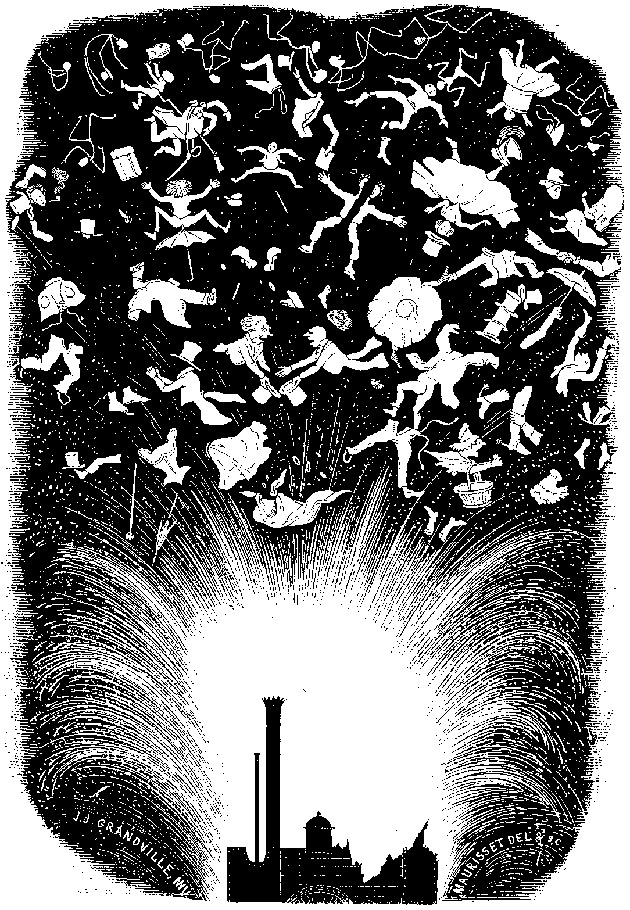
The word “information” has grown urgent and problematic—a signpost seen everywhere, freighted with new meaning and import. We hardly need the lexicographers of the Oxford English Dictionary to tell us that, but after all, this is what they live for. It is a word, they tell us, “exhibiting significant linguistic productivity,” a word that “both reflects and embodies major cultural and technological change,” therefore a word crying out for their attention. In their latest quarterly revision, December 2010, just posted, the entry for “information” is utterly overhauled. (The OED, in case you hadn’t noticed, has evolved into an enterprise of cyberspace, rather than a mere book.)
The renovation has turned a cottage into a palace. Information, n., now runs 9,400 words, the length of a novella. It is a sort of masterpiece—an adventure in cultural history. A century ago “information” did not have much resonance. It was a nothing word. “An item of training; an instruction.” Now (as people have been saying for fifty years) we are in the Information Age. Which, by the way, the OED defines for us in its dry-as-chili-powder prose: “the era in which the retrieval, management, and transmission of information, esp. by using computer technology, is a principal (commercial) activity.”
Rather more effusively, Michael Proffitt, the managing editor of the OED, explains in an announcement to readers why “information” was pushed to the top of the to-do list. “What makes it so distinctive as the fabric of mass communication is the very combination of immateriality and massiveness, its overwhelming diffuseness. It’s also a word which provides a point of imaginative sympathy between OED’s editors and readers.” Information is their business, he is trying to say, and ours.
Originally—and by originally I mean in the fourteenth century, when the written record begins, as far as the OED can tell—the word had a sinister flavor. It budged its way into the old gruff Anglo-Saxon as part of the Norman invasion. It meant something like “accusation” or “incrimination.” The earliest citation comes from the Rolls of Parliament for 1386: “Thanne were such proclamacions made‥bi suggestion & informacion of suche that wolde nought her falsnesse had be knowen to owre lige Lorde.” For centuries thereafter, informations were filed, or recorded, or laid, against people.
From then to now the word takes a twisty path, and the OED’s lexicographers hold our hand around every corner. Information can be “a teaching; an instruction.” It can be “divine influence or direction; inspiration, esp. through the Holy spirit.” It can be “that of which one is apprised or told; intelligence, news.”
Ever lurking behind the arras is the ancient Latin precursor: the verb informare—to give form to; to shape; to mold. Information is the act of infusion with form. Where, and how? The forming takes place in the mind. Our minds are informed; then we have something we lacked before—some idea, some knowledge, some information. In my view this ancient sense of the word possesses a special modern force: when we study information, we learn that it is not a mere commodity, to be possessed by us. It infiltrates us; we are not its masters.
It’s in the nineteenth century that we start to glimpse the modern sense of the word as a big category, a general thing encompassing news and facts, messages and announcements. The real turning point comes in 1948 when the Bell Labs mathematician and engineer Claude Shannon, in his landmark paper (later a book) “A Mathematical Theory of Communication,” made information, as the OED explains, “a mathematically defined quantity divorced from any concept of news or meaning …” We measure it in bits. We recognize it in words, sounds, images; we store it on the printed page and on polycarbonate discs engraved by lasers and in our genes. We are aware, more or less, that it defines our world.
By the way, how do we know people have been talking about the Information Age for fifty years? The OED tells us. The first recorded usage is attributed to “R. S. Leghorn in H. B. Maynard Top Managem. Handbk. xlvii. 1024,” 1960. He turns out to have been Richard Leghorn, founder of Itek Corporation, which made aerospace spy cameras, and later Chief of Intelligence and Reconnaissance Systems Development at the Pentagon. In a single sentence Leghorn invented the phrase and predicted it would not catch on:
Present and anticipated spectacular informational achievements will usher in public recognition of the “information age,” probably under a more symbolic title.
No better title has come along. Along with information age, the OED now recognizes information storage, information transfer, information processing, information retrieval, information architecture, information superhighway, plus (the bad news) information explosion, gap, warfare, overload, and fatigue.
You don’t need the OED to explain that last one, do you? “Apathy, indifference, or mental exhaustion arising from exposure to too much information …” (Sure enough, even “TMI” has made the dictionary, as a draft addition, colloq.)
Advertisement
Oh, and as of December the OED has also overhauled the entry for “digital.” Another story.


